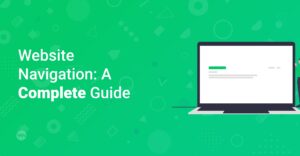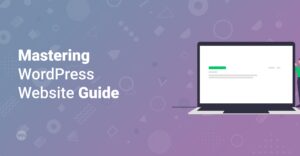Preface
Are you ready to launch your online store but don’t want to break the bank on expensive design tools? You’re in luck! With Elementor’s free version and some clever design tips, you can create a stunning e-commerce website that attracts customers and drives sales. This guide is your starting point to crafting beautiful and functional online stores without spending a dime on premium features. Let’s dive in!
Why Choose Elementor Free for Your E-commerce Design?
Info: Elementor is a drag-and-drop page builder plugin for WordPress that allows you to create custom layouts and designs without coding.
Choosing the right platform is crucial when starting an e-commerce business. Elementor’s free version offers a robust set of features that are perfect for building an eye-catching and user-friendly online store. Here’s why it’s a great choice:
- Ease of Use: Elementor /go/elementor-pro provides an intuitive drag-and-drop interface, making it easy for beginners to design professional-looking pages without any coding knowledge.
- Customization Options: Even with the free version, you have access to numerous templates and customization options to tailor your store to your brand’s unique identity.
- Responsive Design: Ensure your store looks great on all devices (desktops, tablets, and smartphones) with Elementor’s responsive design features.
- Cost-Effective: Building your e-commerce site with Elementor’s free version means you can allocate your budget to other essential areas of your business, like marketing and inventory.
Essential E-commerce Design Tips for Elementor Free
1. Choose the Right Theme
A WordPress theme acts as the foundation of your website’s design. While Elementor gives you the power to customize extensively, starting with a compatible and well-designed theme can save you a lot of time and effort. Astra is a popular choice known for its flexibility and seamless integration with Elementor. Check it out here: /go/astra-pro. Many themes offer free versions that provide a solid base for your e-commerce site.
Hint: Look for themes that offer e-commerce-specific layouts or templates to streamline your design process.
2. Leverage Elementor’s Free Widgets
Elementor’s free version comes with a variety of widgets that are essential for e-commerce design. Here are some key widgets to utilize:
- Image Widget: Showcase your products with high-quality images. Use this widget to create product galleries and attractive visuals.
- Text Editor Widget: Write compelling product descriptions and engaging content for your site.
- Button Widget: Create clear and enticing call-to-action buttons, like ‘Add to Cart’ or ‘Buy Now.’
- Heading Widget: Organize your content with clear and descriptive headings to improve readability and SEO. For more information about SEO optimization, read this article: How to Optimize Your Website for SEO: A Quickstart Guide for WordPress
- Icon Widget: Use icons to highlight key features or benefits of your products.
3. Create Stunning Product Pages
Your product pages are where potential customers decide whether to make a purchase. Make sure they are visually appealing and informative.
- High-Quality Images: Use professional-grade images that showcase your products from multiple angles.
- Detailed Descriptions: Provide comprehensive descriptions that highlight the features, benefits, and unique selling points of each product.
- Pricing and Availability: Clearly display the price and availability of each item. Consider using Elementor’s pricing table widget to showcase different product packages or variations.
- Customer Reviews: If possible, integrate customer reviews to build trust and credibility. While Elementor’s free version doesn’t have a built-in review system, you can use a third-party plugin.
- Call-to-Action Buttons: Make it easy for customers to add products to their cart with prominent ‘Add to Cart’ buttons.
4. Design an Engaging Homepage
Your homepage is the first impression customers have of your online store. Make it count!
- Hero Section: Use a captivating hero image or video to immediately grab visitors’ attention.
- Featured Products: Showcase your best-selling or new products to drive sales.
- Clear Navigation: Make it easy for visitors to find what they’re looking for with a well-organized navigation menu.
- About Us Section: Introduce your brand and tell your story to build a connection with your audience.
- Call-to-Action: Encourage visitors to explore your store, sign up for your newsletter, or make a purchase with clear calls to action.
5. Optimize for Mobile
More and more people are shopping on their mobile devices, so it’s crucial to ensure your e-commerce site is optimized for mobile. Elementor makes this easy with its responsive design features.
- Responsive Layouts: Use Elementor’s responsive mode to adjust the layout and styling of your pages for different screen sizes.
- Mobile-Friendly Navigation: Ensure your navigation menu is easy to use on mobile devices. Consider using a hamburger menu or a mobile-specific menu design.
- Fast Loading Times: Optimize your images and code to ensure your site loads quickly on mobile devices. You can further speed up your WordPress website by using appropriate plugins. Follow this tutorial for plugin installation: How to Install WordPress Plugins
- Touch-Friendly Design: Make sure buttons and links are large enough to be easily tapped on touchscreens.
6. Use Color and Typography Wisely
Color and typography play a significant role in your website’s design and branding. Choose a color palette and font pairing that reflects your brand’s personality and creates a cohesive look and feel.
- Color Palette: Stick to a limited color palette (2-3 primary colors) to maintain a consistent and professional look.
- Typography: Choose fonts that are easy to read and complement your brand’s aesthetic. For some font inspiration read this: Top 10 Free Best Google Fonts for Your Website
- Contrast: Ensure there is sufficient contrast between your text and background colors to improve readability.
7. Add a Footer
A well-designed footer can improve user experience and provide important information.
- Copyright Information: Display your copyright information to protect your intellectual property.
- Contact Information: Include your contact information, such as your email address and phone number.
- Social Media Links: Add links to your social media profiles to encourage visitors to connect with you.
- Privacy Policy and Terms of Service: Include links to your privacy policy and terms of service to ensure compliance with legal requirements.
8. Leverage White Space
White space, or negative space, is the empty space around elements on your page. Using white space effectively can improve readability and create a clean, uncluttered design.
- Margins and Padding: Use margins and padding to create space around your content and elements.
- Whitespace Between Sections: Use whitespace to visually separate different sections of your page.
- Balance: Strive for a balanced design with an appropriate amount of whitespace. Be careful not to clutter the design. Elementor is best mastered with experience. Read more here on how to master design with Elementor: 10 Expert Tips and Tricks for Mastering Elementor Page Builder
9. Keep it Simple
While it’s tempting to add all sorts of fancy features and effects to your e-commerce site, it’s important to keep it simple. A clean, minimalist design is often more effective than a cluttered, overwhelming one.
- Focus on the Essentials: Prioritize the most important elements of your design, such as product images, descriptions, and calls to action.
- Avoid Clutter: Remove any unnecessary elements that distract from your core message.
- User Experience: Design with the user in mind, ensuring your site is easy to navigate and use.
10. Test and Iterate
Once you’ve designed your e-commerce site, it’s important to test it thoroughly and iterate based on user feedback and analytics.
- Cross-Browser Testing: Test your site in different browsers (Chrome, Firefox, Safari, etc.) to ensure it looks and functions correctly.
- Usability Testing: Ask friends, family, or colleagues to test your site and provide feedback on the user experience.
- Analytics: Use tools like Google Analytics to track your website’s performance and identify areas for improvement.
Conclusion
With Elementor’s free version, you can create a professional and visually appealing e-commerce website without spending a fortune. By following these design tips, you’ll be well on your way to attracting customers and driving sales. Remember to focus on creating high-quality product pages, an engaging homepage, and a mobile-friendly design. Good luck, and happy designing!



